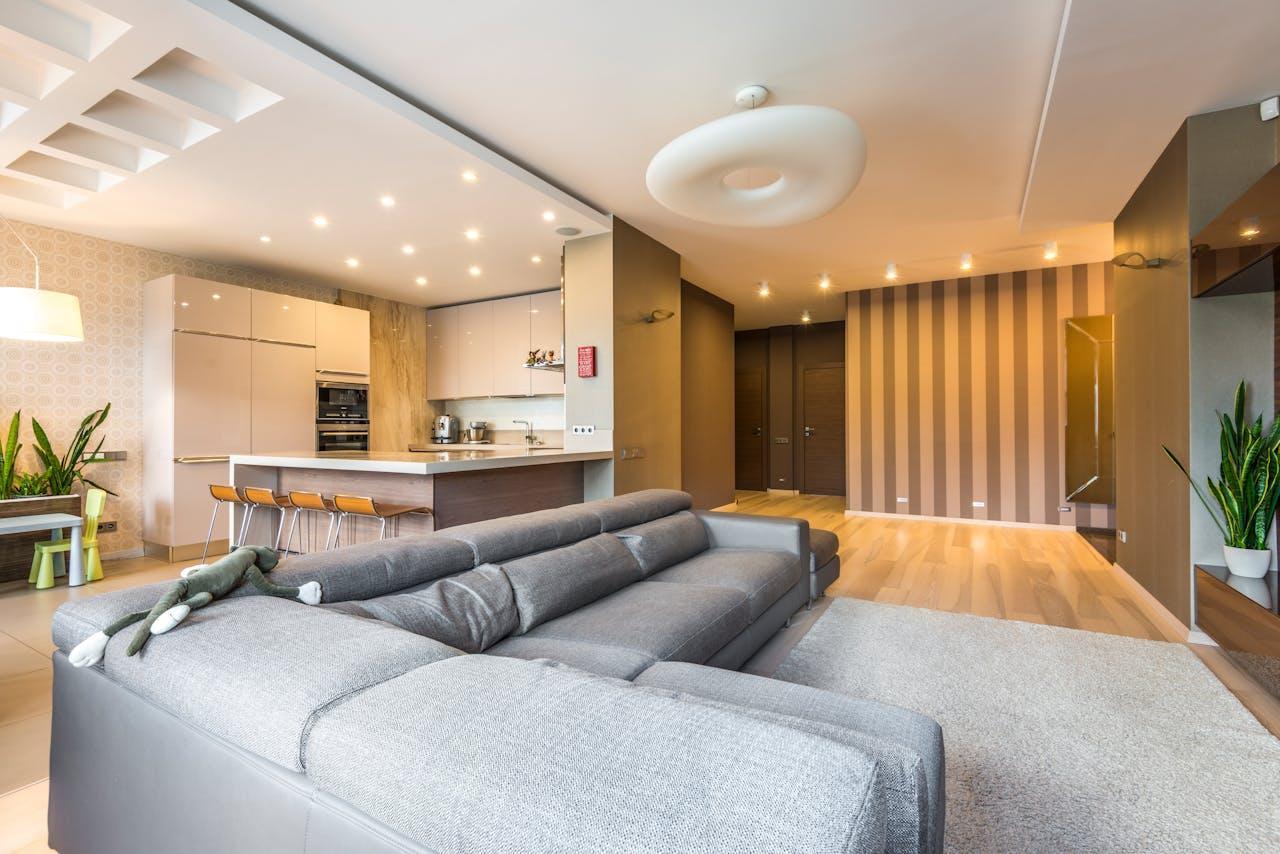In the whirlwind of contemporary life, the lure of open-concept living spaces is capturing the hearts and minds of homeowners everywhere. These innovative designs offer a sense of liberation and connection, transforming even the most modest spaces into expansive, welcoming havens. Whether you’re embarking on a home renovation or building from scratch, mastering the art of open-concept design is crucial for creating a harmonious and tranquil abode. Today, we delve into the myriad benefits of open-concept living and share practical approaches to shaping a space that is not only appealing but also serves your day-to-day needs.
The Charm of Open-Concept Living
Today, open-concept living spaces are synonymous with forward-thinking interior house design, notes leading property management company, Peabody Residential team. The magic lies in their power to erase walls and eliminate obstructions, paving the way for a fluid interconnection of rooms. This continuity promotes interaction, ushers in natural light, and fosters a sense of community—making it an ideal choice for family dwellings and those who enjoy playing host. But the appeal isn’t just about the visuals – open living also ramps up your home’s functionality.
Key Elements of Designing an Open-Concept Space
The process of designing an open-concept space necessitates deliberate thought to ensure that each sector fulfills its purpose while adding to the unified, harmonious aesthetic. Here are some crucial elements to take into account:
Strategic Furniture Placement: Defining Zones
Intelligent furniture positioning defines distinct sections within open-concept space, as the best interior designers in Scottsdale, AZ will tell you. Sofas, rugs, and shelving units can subtly mark out areas like the living room, dining nook, and kitchen. This approach sets visual boundaries without compromising the spacious feel, enabling fluid movement between various activities.
Illumination Mastery: Setting the Mood and Emphasizing Areas
Lighting stands tall as a pivotal player in crafting the ambiance of an open space. Specific lighting fixtures like pendant lights above the dining table or recessed lighting in the lounge can spotlight particular areas. A layered lighting strategy combining ambient, task, and accent lights adds depth and intrigue, rendering each zone all the more inviting.
Consistency in Flooring and Material Selection
Maintaining uniformity in flooring and material choices throughout your open-concept space ensures continuity and coherence. Aim for complementary materials, such as timber floors coupled with area rugs, to infuse warmth and texture. This methodology ties the space together, improving the overall design.
Tips for Enhanced Space Utilization and Functionality
To amplify the functionality of an open-concept area, judicious design choices are essential. Here are some handy tips:
Incorporating Storage Solutions: Tame the Clutter
Storage is a fundamental aspect of keeping your open-concept space neat and organized. Built-ins, floating shelves, and other ingenious storage solutions help to combat clutter, ensuring a clean, open feel while giving everything its rightful place.
Multi-Functional Furniture: The Route to Versatility
Items such as extendable dining tables, sleeper sofas, and storage ottomans are a godsend in open-concept areas. These adaptable pieces can adjust to varying needs, enhancing the efficiency of your space.
Openness vs. Privacy: Striking a Balance
Open-concept designs champion openness, but ensuring occasional privacy is vital. Consider screens, curtains, or sliding doors to carve out secluded nooks within the space. This flexibility lets you bask in the openness while allowing for moments of seclusion.
Bringing it All Together
Crafting an open-concept living area opens up endless avenues for creativity and experimentation. By thoughtfully considering each element—from strategic furniture placement to effective lighting—you can create a space that seamlessly blends functionality with aesthetics. Remember to introduce storage solutions, incorporate versatile furniture, and address the balance between privacy and openness. These elements can make your open-concept design a comforting sanctuary that fluidly accommodates the rhythms of your life. If you’re ready to venture further in your home transformation journey, consider consulting design professionals who can help crystallize your vision.





